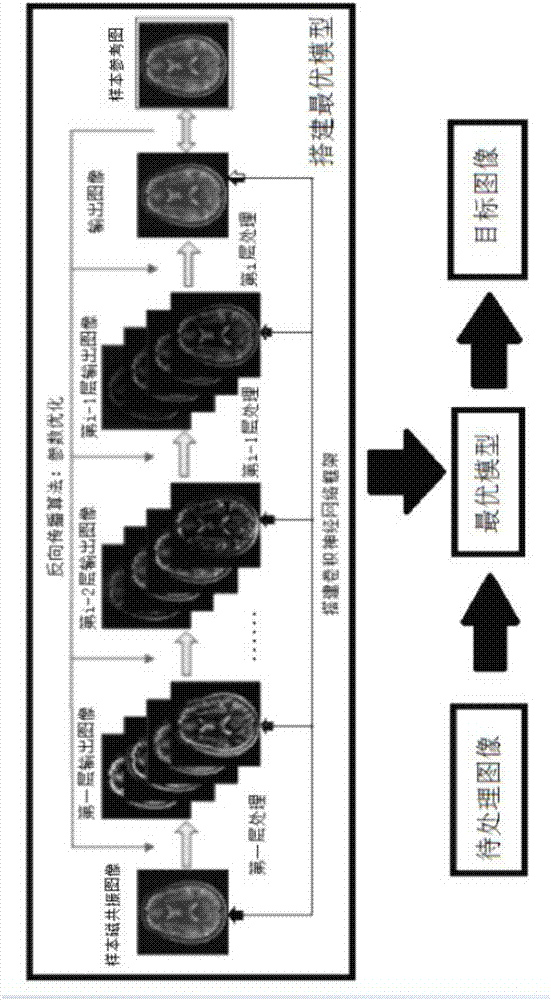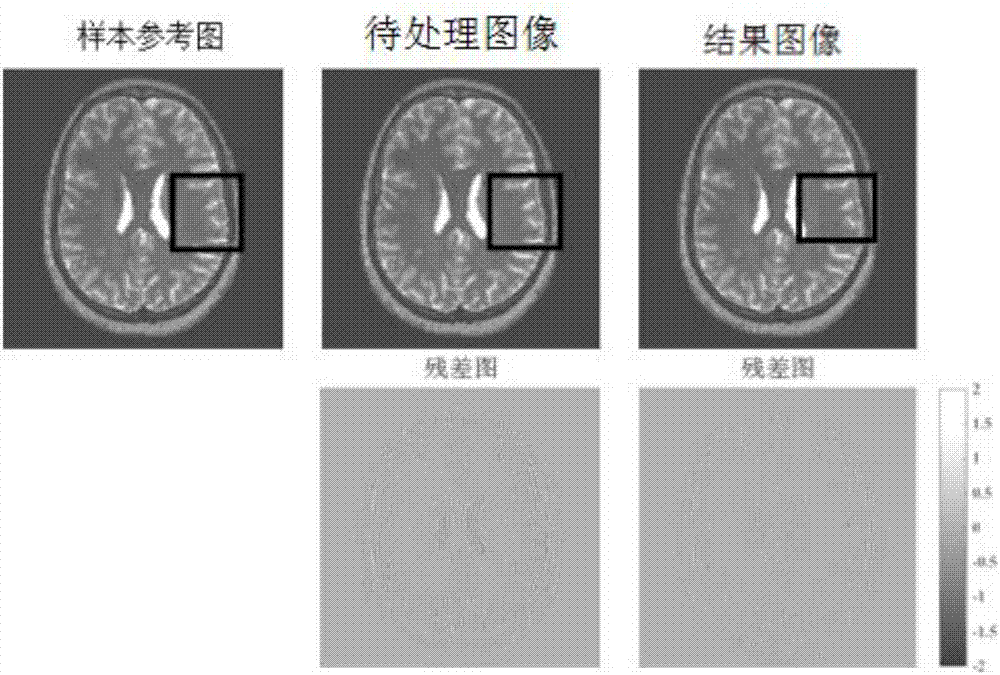Method using convolution nerve network to remove magnetic resonance image downsampling artifact
A technology of convolutional neural network and magnetic resonance image, applied in biological neural network model, neural architecture, image enhancement, etc., can solve the problems of residual artifacts, low image quality, loss of detailed structure, etc., and achieve high resolution and Contrast, high robustness effects
- Summary
- Abstract
- Description
- Claims
- Application Information
AI Technical Summary
Problems solved by technology
Method used
Image
Examples
Embodiment 1
[0062] Such as figure 1 As shown, based on the method of convolutional neural network to remove magnetic resonance image downsampling artifacts, the magnetic resonance image with artifacts is processed by the convolutional neural network to obtain an artifact-free result image.
[0063] The sample magnetic resonance image with artifacts is taken as the input image, processed by the convolutional neural network framework to obtain the optimal model, and then the magnetic resonance image to be processed is input into the optimal model to obtain the result image without artifacts.
[0064] Specific steps are as follows:
[0065] (1) Obtain the optimal model
[0066] T1. Preprocessing the magnetic resonance image of the sample.
[0067] T2. Build the basic framework of convolutional neural networks.
[0068] T3. Optimize the basic frame parameters of the convolutional neural network through the training data to obtain the optimal model.
[0069] (2) De-artifacting the image to be processed th...
Embodiment 2
[0103] Based on the method of convolutional neural network to remove magnetic resonance image downsampling artifacts, the other features are the same as in embodiment 1, except that: when i=4, the basic structure of the convolutional neural network is constructed in step T2 through the construction feature extraction in turn Layer, build feature enhancement layer, build nonlinear mapping layer and build reconstruction layer.
[0104] Build the feature extraction layer: extract features from the input data to get the first layer of output data.
[0105] Build a feature enhancement layer: further extract features from the output data of the first layer to obtain the output data of the second layer.
[0106] Build a non-linear mapping layer: map the output data group of the second layer to a sample reference image without artifacts to obtain the output data of the third layer.
[0107] Build the reconstruction layer: reorganize the output data of the third layer to output the predicted i...
Embodiment 3
[0115] The method based on the convolutional neural network to remove the magnetic resonance image down-sampling artifacts, other features are the same as the first embodiment, the difference lies in: Figure 3-4 As shown, image 3 The actual image of the artifact removed by the method of the present invention is given, including the reference image of the sample, the magnetic resonance image of the sample and the result image after the method of the present invention is used to remove the artifact, and the residual image relative to the reference image. by image 3 It can be seen that the method of the present invention can effectively and robustly remove Gibbs artifacts, retain detailed information, and improve image quality.
[0116] Figure 4 for image 3 It can be seen from the partially enlarged view that the method of the present invention can effectively remove the Gibbs artifact.
PUM
 Login to View More
Login to View More Abstract
Description
Claims
Application Information
 Login to View More
Login to View More - Generate Ideas
- Intellectual Property
- Life Sciences
- Materials
- Tech Scout
- Unparalleled Data Quality
- Higher Quality Content
- 60% Fewer Hallucinations
Browse by: Latest US Patents, China's latest patents, Technical Efficacy Thesaurus, Application Domain, Technology Topic, Popular Technical Reports.
© 2025 PatSnap. All rights reserved.Legal|Privacy policy|Modern Slavery Act Transparency Statement|Sitemap|About US| Contact US: help@patsnap.com



